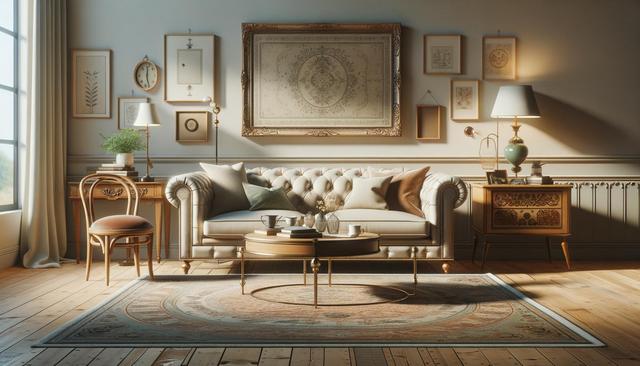
Timeless Charm: How to Find the Perfect Vintage Furniture Piece for Your Home
Understanding the Value of Vintage Furniture
Vintage furniture offers more than just aesthetic appeal—it brings history, craftsmanship, and durability into your home. Unlike mass-produced modern pieces, vintage items are often handcrafted using solid wood and traditional joinery techniques that stand the test of time. This level of detail and quality is increasingly rare and is one of the main reasons why vintage furniture remains highly sought after. Whether you’re furnishing a living room, dining area, or bedroom, a well-chosen vintage piece adds depth and character that modern furniture can struggle to match.
Another key benefit is sustainability. By choosing vintage, you’re giving new life to old furniture and reducing the demand for new resources. It’s a way to decorate responsibly while still expressing your individual style. Vintage pieces are also versatile—they can complement a wide range of interior styles, from traditional to eclectic, and even modern décors when paired thoughtfully.
Determining Your Style and Needs
Before you begin your search, take time to define your personal style and the functional needs of your space. Are you drawn to the sleek lines of mid-century modern, the ornate details of Victorian design, or the rustic charm of farmhouse furniture? Knowing your preferences will help narrow your search and make the process more enjoyable.
Consider the function the piece will serve. For instance:
- Do you need a statement armchair for your reading nook?
- Is a compact writing desk the missing element in your home office?
- Are you looking for a sturdy dining table that blends charm with practicality?
Mapping out your goals helps avoid impulse buys and ensures the piece you choose truly fits your everyday life. It’s also helpful to measure your space and have dimensions in mind when shopping, especially for larger furniture items.
Where to Find Quality Vintage Furniture
There are many places to discover unique and high-quality vintage furniture. Local antique shops and flea markets often carry hidden gems at reasonable prices. Estate sales and auctions can also turn up rare finds, especially if you’re searching for pieces with specific historical value. When shopping in person, you can inspect the condition and construction quality firsthand, which is a significant advantage.
Online marketplaces have also expanded the reach of vintage furniture hunting. Reputable vintage dealers and curated online platforms often list detailed descriptions, dimensions, and photos of their pieces. However, when shopping online, be sure to:
- Ask questions about the item’s condition and history
- Check return policies and shipping costs
- Read customer reviews or ratings of sellers
Combining both online and offline searches gives you the best chance of finding a piece that fits your style, budget, and quality expectations.
Evaluating Quality and Authenticity
Assessing the quality and authenticity of vintage furniture is essential to getting the most value from your purchase. Start by examining the materials used—solid wood, dovetail joints, and hand-carved details typically indicate a higher-quality piece. Avoid items with particle board or excessive veneer unless they are from a known period or maker.
Signs of authenticity may include:
- Maker’s marks or manufacturer labels
- Original hardware and finishes
- Wear that’s consistent with age (not artificially distressed)
Restoration is common with vintage furniture, but it should be done sensitively. Over-restoration can strip away the character that makes a piece valuable. If you’re unsure, consult an expert or local appraiser who specializes in antiques and vintage furnishings.
Making It Work in Your Space
Once you bring a vintage piece home, the next step is integrating it into your existing design. Even a single vintage item can transform a room when styled thoughtfully. Use it as a focal point or anchor piece, then build around it with complementary colors, textures, and accessories.
Here are a few tips for styling vintage furniture:
- Mix with modern items to create contrast and balance
- Play with textiles—vintage pieces pair well with contemporary rugs or cushions
- Use lighting to highlight unique features like intricate woodwork or patina
Don’t be afraid to repurpose vintage furniture creatively. A vintage dresser can become a bathroom vanity, or an old trunk can serve as a coffee table. These kinds of adaptations keep the charm of vintage alive while meeting your modern needs.
Conclusion
Finding the perfect vintage furniture piece is more than a shopping trip—it’s a journey into timeless design, craftsmanship, and personal expression. By understanding your style, knowing where to look, and evaluating pieces carefully, you can bring home furnishings that offer both beauty and function. Whether you’re adding a single accent or furnishing an entire room, vintage furniture helps create a space that’s as unique as you are. Embrace the charm, invest in quality, and let your home tell a story through every piece you choose.


